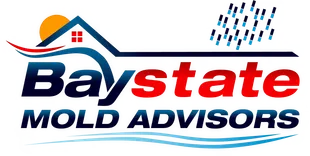Residential Mold Inspection Services in Brockton, MA
Residential Mold Inspection for Water-Damaged Homes
Homes with water damage are highly susceptible to hidden mold growth, which can lead to serious health risks and structural issues. Our residential mold inspection service thoroughly examines areas affected by leaks or flooding, identifying mold before it spreads. Using advanced detection techniques, we ensure your home remains safe from mold-related hazards, preserving both health and property integrity.
Who Benefits from a Residential Mold Inspection?
A residential mold inspection benefits a wide range of homeowners, helping to ensure a safe and healthy living environment. Here’s who can gain the most from this service:
Homeowners with Past Water Damage
Allergy and Asthma Sufferers
Families with Young Children or Elderly Residents
New Home Buyers or Sellers
Homes with Persistent Odors
Homes Located in High-Humidity Areas
Signs You Need a Professional Mold Inspection
If you’re unsure whether your home needs a mold inspection, here are common signs that indicate it might be time to call a professional:
Musty or earthy odors persist in certain areas of your home.
You notice visible mold growth on walls, ceilings, or other surfaces.
Your home has experienced recent water damage from leaks, flooding, or high humidity.
Family members experience unexplained allergy or respiratory symptoms at home.
Dark spots or stains appear on walls, floors, or ceilings without an apparent cause.
Paint or wallpaper begins to peel, bubble, or discolor, especially in damp areas.
There’s an increase in humidity or condensation, particularly around windows and in basements.
Previous mold remediation was done, and you want to ensure it was fully successful.
How Mold Inspections Protect Your Health and Home
Mold inspections safeguard both your health and property by identifying hidden mold that can cause respiratory issues, allergies, and structural damage. With advanced detection tools, inspectors locate mold in hard-to-reach areas, helping to prevent its spread. Early detection reduces health risks and saves on costly repairs, keeping your home safe and comfortable for everyone inside.
Common Areas We Inspect for Mold Growth
Mold can develop in various areas of your home, especially where moisture and humidity are present. During a thorough inspection, we examine key locations that are prone to mold growth.

Basements
Basements are highly susceptible to mold due to limited ventilation and potential for water leaks. We check walls, floors, and hidden corners for any signs of moisture or mold.

Bathrooms
With frequent water use and high humidity, bathrooms are prime locations for mold. We inspect under sinks, around showers, and in grout lines to ensure these areas are mold-free.

Kitchens
Kitchens can develop mold around sinks, behind appliances, and in cabinets due to water spills and steam. We carefully examine these areas to catch any early signs of mold growth.

Attics
Poor ventilation and potential roof leaks make attics vulnerable to mold. We inspect roof joists, insulation, and stored items to identify any hidden mold in this less-frequented space.

Crawl Spaces
Crawl spaces are dark, damp areas prone to mold. We check thoroughly for leaks, condensation, and other moisture sources to prevent mold from spreading to your home’s foundation.

Around Windows and Doors
Condensation often forms around windows and doors, creating an ideal environment for mold. We inspect frames and sills to ensure no mold is taking hold in these areas.
Frequently Asked Questions
What areas of the home are typically inspected for mold?
During a residential mold inspection, we examine high-risk areas like basements, bathrooms, kitchens, attics, crawl spaces, and around windows and doors. These areas are prone to moisture and, therefore, potential mold growth. Inspectors look for visible signs of mold and use specialized equipment to detect hidden moisture and mold in these spaces.
How should I prepare my home for a mold inspection?
To prepare, make sure areas with potential mold issues are accessible. Clear clutter around basements, bathrooms, and under sinks, where mold is common. Avoid cleaning any suspected mold areas before the inspection, as this can alter results. Also, inform the inspector of any past water damage or problem areas you’ve noticed.
What should I do if mold is found during the inspection?
If mold is detected, the inspector will provide a detailed report on the type and location of the mold, along with recommendations. Professional remediation may be advised to remove mold safely and prevent it from spreading. Follow any guidance from the inspector for necessary next steps to protect health and property.
How long does a typical mold inspection take?
The length of a mold inspection varies depending on the size of the home and the specific areas needing inspection. Generally, it takes one to two hours for a standard home. Larger homes or properties with multiple high-risk areas may take longer to ensure a thorough assessment.
Will the inspection identify the cause of mold growth?
Yes, part of the inspection process involves identifying potential sources of moisture that may be causing mold, such as leaks, poor ventilation, or high humidity. By pinpointing these causes, inspectors can offer guidance on steps to prevent future mold issues, such as repairing leaks or improving ventilation.
contact us
Schedule a Reliable Residential Mold Inspection Today
Protect your home from hidden mold risks with a professional residential mold inspection. Our experienced team thoroughly inspects every high-risk area, ensuring your home remains safe and healthy. Contact us to set up an inspection and gain peace of mind.
Our Services
Helpful Links
Business Hours
Mon, Tue, Thu, Fri:
8:00 am - 5:00 pm
Wednesday : 8:00 am - 3:00 pm
Sat - Sun : Closed
© 2025 All Rights Reserved | Baystate Mold Advisors LLC

